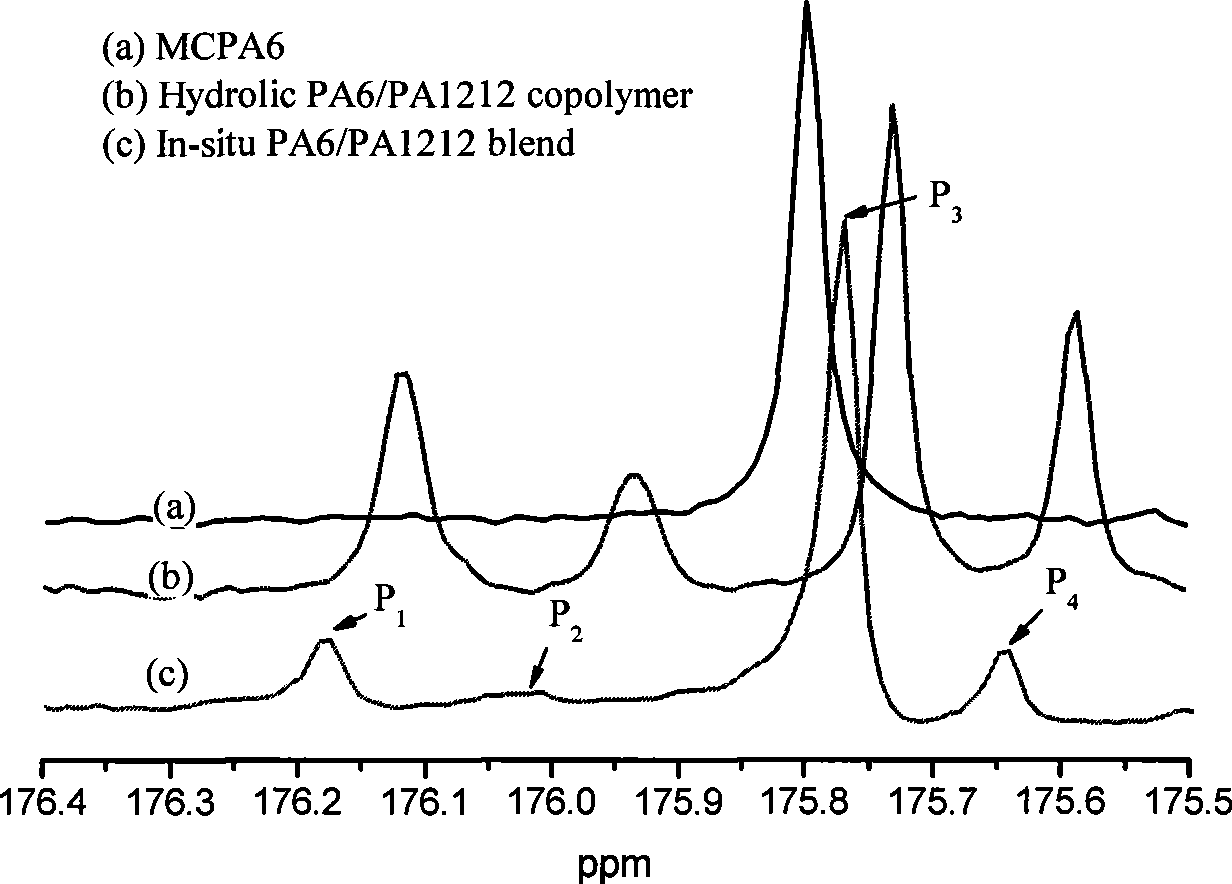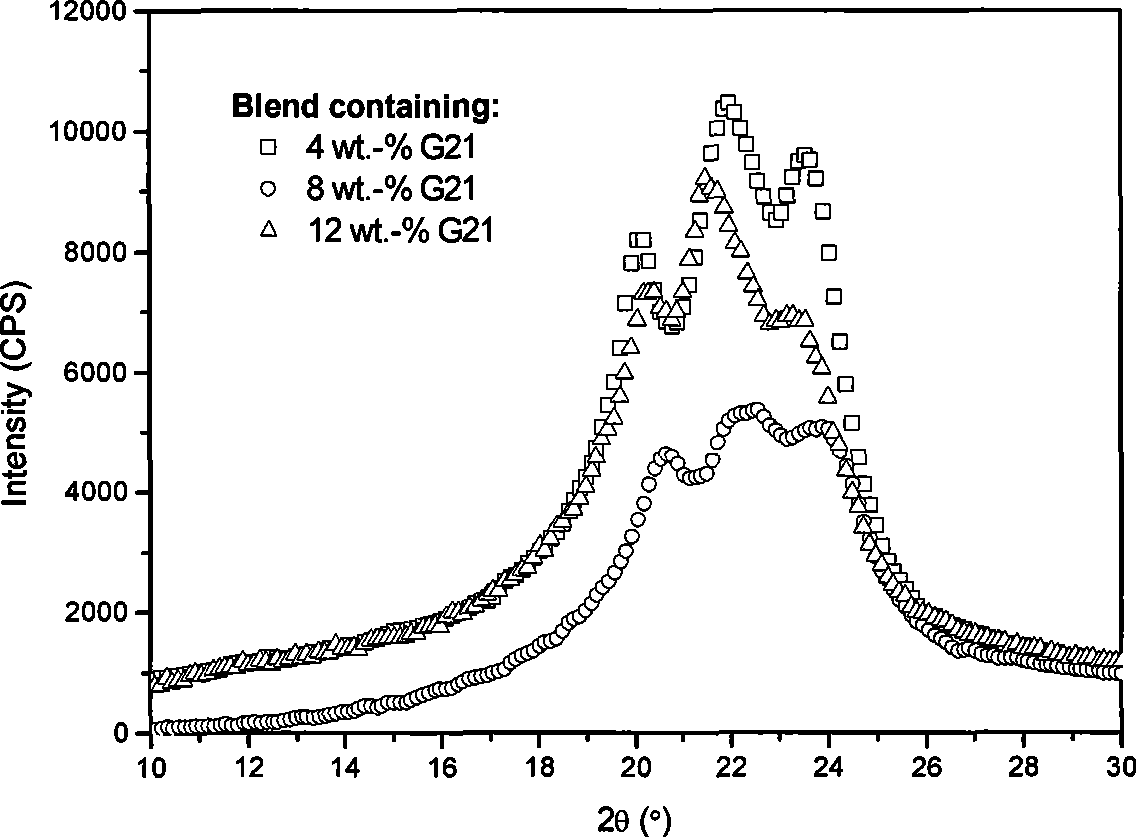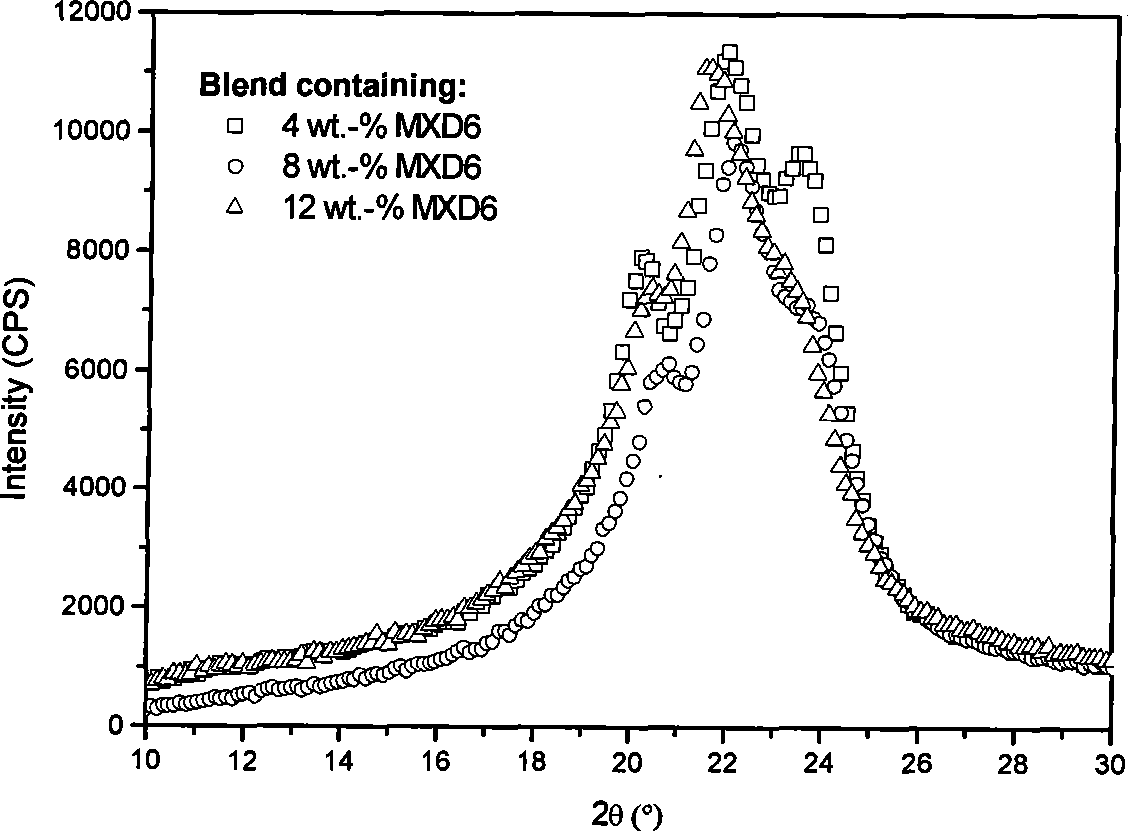Copolymerization nylon composition and preparation thereof
A technology of copolymerized nylon and its composition, which is applied in the field of lactam-based anionic polymerized copolymerized nylon and its preparation, can solve the problems of high processing precision, high production cost, complex molds, etc., achieve short polymerization time, fast reaction speed, Equipped with simple effects
- Summary
- Abstract
- Description
- Claims
- Application Information
AI Technical Summary
Problems solved by technology
Method used
Image
Examples
preparation example Construction
[0072] The preparation method of the present invention is described in detail below:
[0073] Preparation
[0074] A method for preparing nylon copolymer, comprising the steps of:
[0075] (a) providing a mixture of:
[0076] Component (A) 100 parts by weight of one or more lactams, component (B) 1-100 parts by weight of nylon of other structures, component (C) 0-100 parts by weight of inorganic filler or polymer filler, component (D) 0.01-10 parts by weight of anionic polymerization initiator, 0.01-50 parts by weight of component (E) activator;
[0077] Wherein the nylon of other structures of the component (B) is a homopolymer or copolymer containing amide repeating units on the main chain of the molecule, and the nylon of other structures of the component (A) and the amide of the lactam of the component (B) different repeating units;
[0078] (b) Polymerizing the mixture in step (a) to obtain copolymerized nylon.
[0079] Preferably, the mixing sequence of the mixture ...
Embodiment 1
[0100]25 g of nylon 1212 (Mη=20000) was dried at 80° C. for 12 hours. Put 100 g of caprolactam in a three-necked flask, heat and melt, and remove water under reduced pressure. Add nylon 1212 to caprolactam melt and dissolve under nitrogen protection. Add 0.18 g of sodium hydroxide (based on the total weight of the sodium hydroxide solution), remove water under reduced pressure, and maintain the solution at 180°C. Then pour 0.4ml of TDI (toluene diisocyanate) and mix evenly, pour it into a mold at 180°C, polymerize for 20 minutes and take it out to obtain the finished product.
[0101] The NMR spectrum of the prepared polymer is as figure 1 shown. If there is no copolymerization between nylon 6 and nylon 1212, only two absorption peaks should be displayed on the NMR spectrum. However, the sample prepared by the method desired to be protected by this patent presents four peaks, indicating that a copolymerization reaction has taken place between the two components.
Embodiment 2
[0103] Dry 4 g, 8 g or 12 g of nylon 3Me6T (chemical structure shown in Formula 1 below) at 80° C. for 12 hours, respectively. Put 100 g of caprolactam in a three-necked flask, heat and melt, and remove water under reduced pressure. Add 3Me6T to caprolactam melt and dissolve under nitrogen protection. Add 0.2 g of solid sodium hydroxide, remove water under reduced pressure, and maintain the solution at 180°C. Then pour 0.4ml of MDI and mix evenly, pour it into a mold at 180°C, polymerize for 20 minutes and take it out to get the finished product.
[0104] The chemical structure of Molecular Formula 1 3Me6T:
[0105] Mechanical property tests showed that the strength and modulus of the obtained copolymer were significantly improved, as shown in Table 1.
[0106] Table 1 Mechanical properties of PA6 / 3Me6T copolymer
[0107]
PUM
 Login to View More
Login to View More Abstract
Description
Claims
Application Information
 Login to View More
Login to View More - R&D
- Intellectual Property
- Life Sciences
- Materials
- Tech Scout
- Unparalleled Data Quality
- Higher Quality Content
- 60% Fewer Hallucinations
Browse by: Latest US Patents, China's latest patents, Technical Efficacy Thesaurus, Application Domain, Technology Topic, Popular Technical Reports.
© 2025 PatSnap. All rights reserved.Legal|Privacy policy|Modern Slavery Act Transparency Statement|Sitemap|About US| Contact US: help@patsnap.com



